Tendou Vapor took a risk with the post-less design of the Tokugawa RDA, but has it paid off? Our Tokugawa RDA review puts the unique device to the test.
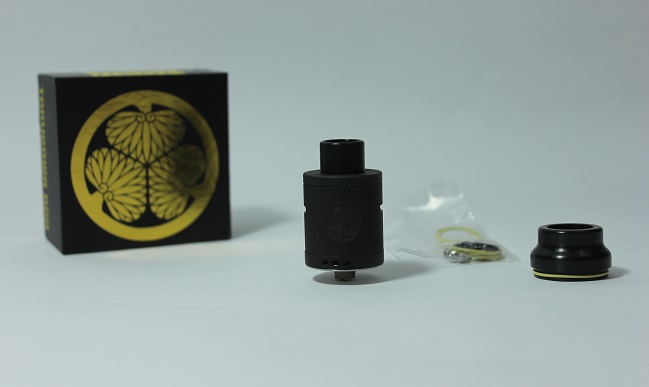
Is it worth buying?
With a recommended retail price of $60 to $70, the Tokugawa by Tendou Vapor definitely isn’t the most affordable RDA on the market. But you do get something pretty great for your money.
It’s well-made, puts out substantial amounts of vapor, can be tweaked to suit the needs of flavor-chasers and is pretty easy to build on. The unusual deck layout might put you off, but it really is easy to get used to and a welcome change from more crowded deck designs. It isn’t the perfect RDA, but it has a hell of a lot to offer rebuilders looking for something unique that performs like a champ.
Full review
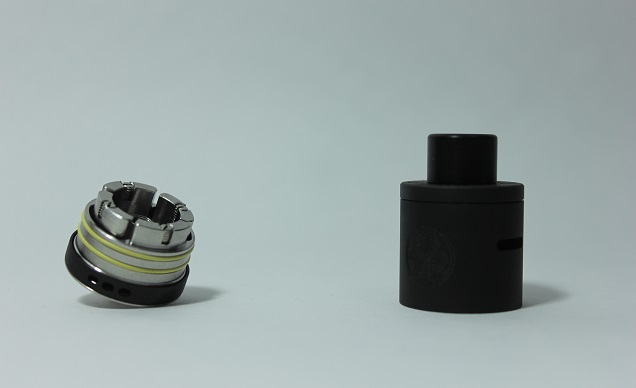
RDAs are a strange thing to buy. While the small differences between them can make a huge difference, for the most part, the options on the market have a lot more similarities than they do differences. These days, a two-post velocity-style deck will be accompanied with a nice big juice well and plenty of airflow options. The details can vary – some devices have unique airflow arrangements, for instance – but on the whole, most RDAs are ultimately similar.
But the Tokugawa RDA from Tendou Vapor does things differently.
With a bare deck and the posts forming a curved wall around it, the RDA is definitely an intriguing departure from the norm. But is it really worthwhile? Should you try out the RDA? Our Tokugawa RDA review puts it to the test to find out.
Our Tokugawa RDA was received as part of a Vapebox – you can read more about the service (including what else was in the box) in our VapeBox review.
What You Get
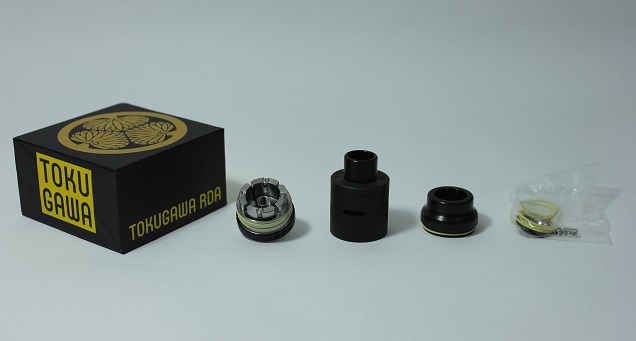
The Tendou Vapor Tokugawa rebuildable dripping atomizer comes in a small, nicely-designed box with a pull-out middle section and all of the goodies in three compartments within. You get the RDA with the standard drip tip, as well as a much wider competition cap and a bag of extras. The extras include spare O-rings, a cover for the bottom airflow slot and some spare screws for the posts.
Overall, it’s a fairly straightforward offering but it provides everything you need to get started apart from wick, wire and e-juice.
Tokugawa RDA Review: Design
Appearance
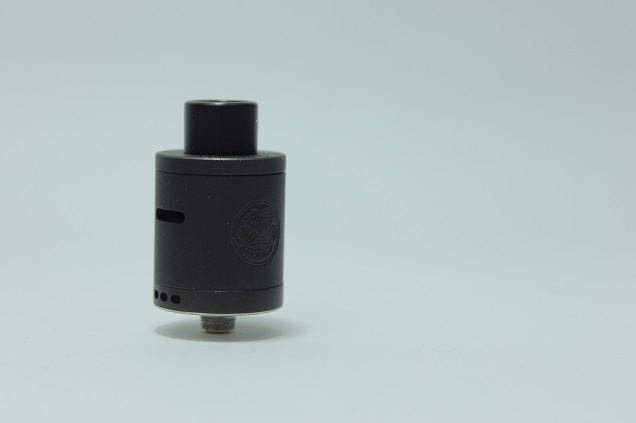
The Tokugawa RDA has a great look, on the whole. The RDA comes in black or stainless steel, and the body is a solid color with minimal branding. The circular Tendou Vapor logo is printed on the body of the atomizer on opposite sides, but it’s a cool logo that adds some flair to the overall look. The standard cap has “Toku Gawa” printed on it, but it doesn’t stand out too much and doesn’t detract from the overall impact.
The Unique Deck Design

The most notable thing about the Tendou Vapor Tokugawa RDA is its deck. Where most RDAs have two or three posts across the center of the deck, the Tokugawa uses four separate posts that form a wall around the center of the deck. Each has a small screw in the top, which is loosened to open up the post holes. The intention here is that it makes it much simpler to position your coils in the center of the deck and get the most out of the bottom airflow hole.
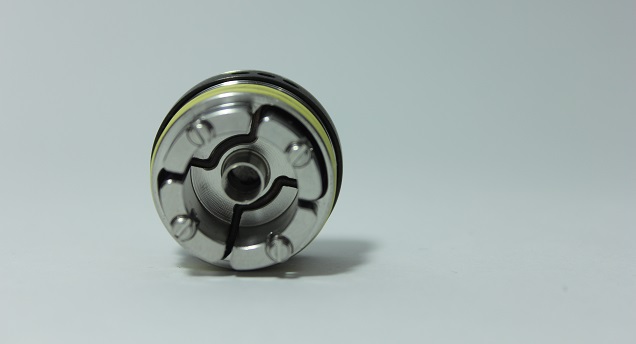
If you’re as confused as I was on first seeing the layout, if you look in the center you can see that the positive posts are actually part of one solid piece, and the two negative posts are off to the side. So to build you attach one end of your coil to one of the positive posts and the other to one of the negative posts.
The Dual Airflow Control System
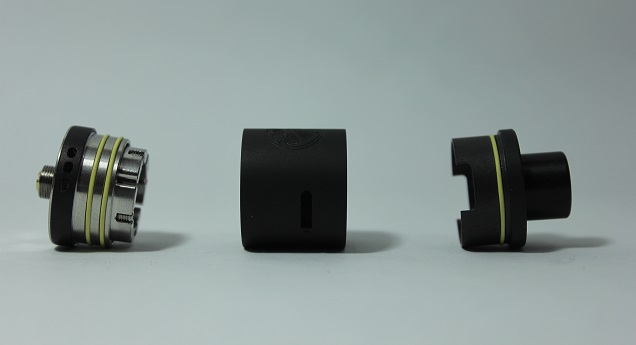
Tendou Vapor has also paid special attention to the airflow system for the Tokugawa. The main airflow system works in the standard way: there are two oval-shaped slots in the top cap, which can be closed off or opened up to suit your preferences by twisting the top. But there are also two groups of three airflow holes around the bottom of the atomizer, which feed up to a tube in the center of the deck. This gives you a direct, under-coil airflow to improve flavor and vapor production.
If two separate sources of airflow is a bit too much for you, you can close the bottom airflow off completely. To do this, simply screw the stopper into the hole in the middle of the deck. Not only does this give you more control over your airflow, it can also help you stop or at least minimize leaking from the RDA.
The Juice Well
One big benefit of the unique deck design is that the juice well on the Tokugawa is that it leaves plenty of room for a 6 mm deep juice well. This is really better than it might sound, because the deck is pretty much bare, so you can get quite a lot of juice in there without spilling. The well is only really limited by the under-coil airflow hole’s position, so if you plug the hole with the included screw you get a bit more space to play with.
The Drip Tips

The Tokugawa by Tendou Vapor comes with two different drip tips: one standard option and one huge, cloud-friendly option. The standard one has two pieces: the drip tip itself and a top for the RDA that it attaches to. The top section has an inner sleeve and can be twisted to cover or uncover the airflow slot. The standard drip tip is a little wider than standard offerings, but nothing compared to the beefy alternative. Both look great on the RDA, and including them in the package keeps both the cloud-chasers and the flavor-chasers happy.
Overall
The Tokugawa RDA by Tendou Vapor is really well-designed. It’s unique in terms of deck design, offers plenty of airflow options, it’s set up for easier rebuilding and it looks awesome too.
Tokugawa RDA Review: In Use
Ease of Rebuilding
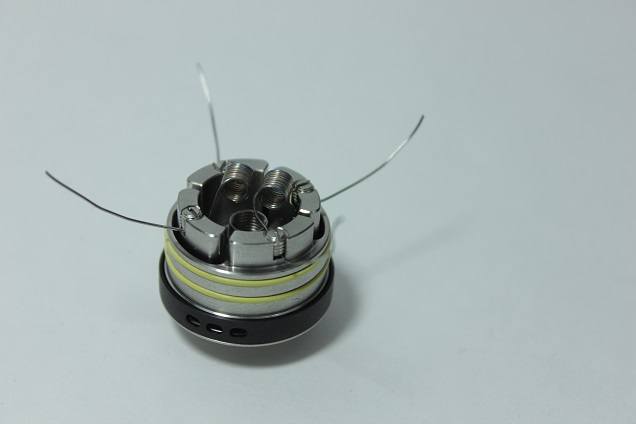
One of the most important things about any RDA is how easy it is to build with. The Tokugawa rebuildable dripping atomizer has a lot of potential in this area because of the deck design, and the good news is that it works out just as well as you’d hope.
The four posts have flat-head grub screws in their centers, and these can be unscrewed to open up the large post-holes. This means you can easily use thicker-gauge wires or things like Clapton coils without issues.

Once you’ve wrapped your coil, all you have to do is identify the positive posts (which is easy to do) and connect one leg to a positive post and one to a negative post. Of course, you can do this again with a second and even more coils.
The biggest challenge is arranging the coils so they sit towards the center but don’t touch or crowd the center airhole too much. Thankfully, there is quite a lot of vertical space under the top cap too, so it’s simple enough to arrange your coils to your liking.
A big plus-point for the design is that the spare ends of your coil legs all stick out on the outside of the deck. This means it’s really easy to snip the wire-ends down to size, since you don’t have to carefully position your wire cutters to avoid accidentally catching your coils.
Overall, the building process on the Tokugawa is very forgiving thanks to the unique design. It might be a bit of a challenge for somebody brand new to rebuilding, but you’ll get the hang of it in no time.
Performance
It goes without saying that a huge factor in the performance you get from the Tokugawa is the specific build you’re working with, but overall the RDA does perform really well. Your coils heat efficiently and there are more than enough airflow options to keep most vapers happy.
With all of the airflow options open, you get a very airy, cloudy vape. But even with the under-coil one closed off the vapor production is still excellent. The flavor is better with the smaller, standard drip tip and the airflow closed off a little, but it’s great in any configuration.
Personally I prefer the smaller drip tip, but the big one definitely makes things a lot cloudier. This is a big plus-point for many vapers, though, especially if you’re planning on entering a cloud competition in the future.
Does the Tokugawa RDA Leak?
The Tendou Vapor Tokugawa doesn’t do too badly at all when it comes to leaks. The position of the main airflow slots is comfortably above the juice well and you’re very unlikely to have problems there.
It isn’t perfect, though. The only issue is the under-coil airflow, which can lead to leaks out of the airflow holes at the base of the RDA. The issue is juice getting down the central tube, so this can be rectified by covering it over. However, you can also position your coils so you can drip without getting juice down there, and even if you do the leaking is very minor.
On the whole, the Tokugawa RDA does an admirable job in avoiding leaking. You’ll still run into minor issues, but it’s much better than with most other RDAs.
Build Quality
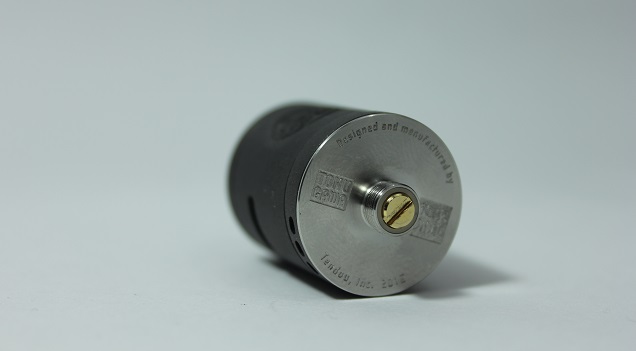
The Tokugawa is a high-quality RDA. Made from stainless steel, with Delrin drip tips and an adjustable gold-plated brass contact point, it has both top-end materials and everything is put together well. The O-rings provide just enough resistance to stop the top cap from coming off accidentally, but not so much that it’s hard to remove. The whole package works just as you want it to, so there are no complaints here.

